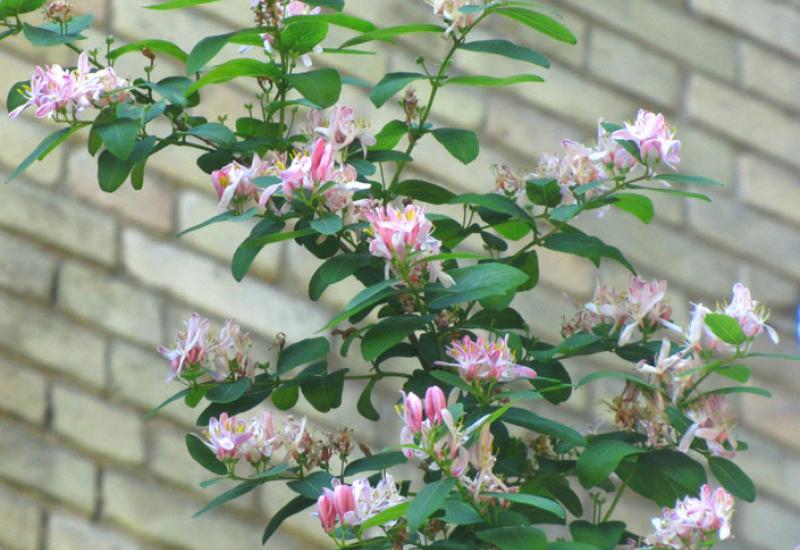There are a huge amount of different plants grow on the territory of our park. “When walking along the territory of KPI two times slower, it is possible to see four times more”, - noticed a colleague, observing unknown bush on the corner of the campus (from the side of the counting house). His companion answered: “Often run here and something is always obstructing me to walk”. What a diverting plant branched there its pink blossom? Don’t be lazy to lift your eyes and see this beauty.
The answer is simple. This knaggy type is honeysuckle (lat. Lonicera). Its native land is considered to be south-east Asia, from where it migrated to North America, Europe and other regions. Exist about 200 different types of this plant, but just a few of them are eatable. The blue honeysuckle is absolutely harmless. Its berries look like blueberry, have smooth structure and tight skin, covered with glaucousness. The standard size of the berry – about 1 sm. They are ripe in July-August. The taste can differ from sweet to aigre-doux according to natural area. It’s useful to eat fresh honeysuckle melt with sugar or in a juicy form. For winter berries are frozen.
Its berries are a real health drug store. There are vitamins A, B (B1, B2, B9), P and C. It can be compared with lemon because of vitamin C. By mineral combination (magnesium, kalium, phosphorus, iodine, calcium, aluminium, manganese, barium, cuprum, silicium, ferrum) it has the first place among all widespread berries. The berries are rich in organic acids (oxalic, amber, malic, сіtric) and contain sugar in form of galactose, fructose, glucose.
In medicine there are medical products from honeysuckle. It is irreplaceable for heart-vascular system diseases, it is used against anemia and different forms of hypertonia, have positive influence on liver, gall-bladder, kidneys condition. The con of honeysuckle is its ability to downsize and normalize blood pressure and eliminate headache.
So enjoy the spring beauty and let the berries make you glad just in form of sweets, not medicaments.

